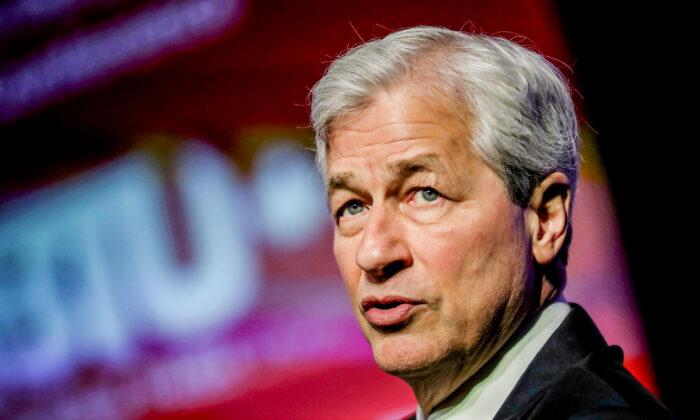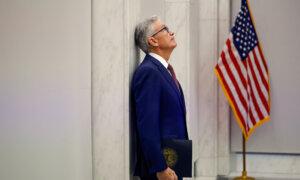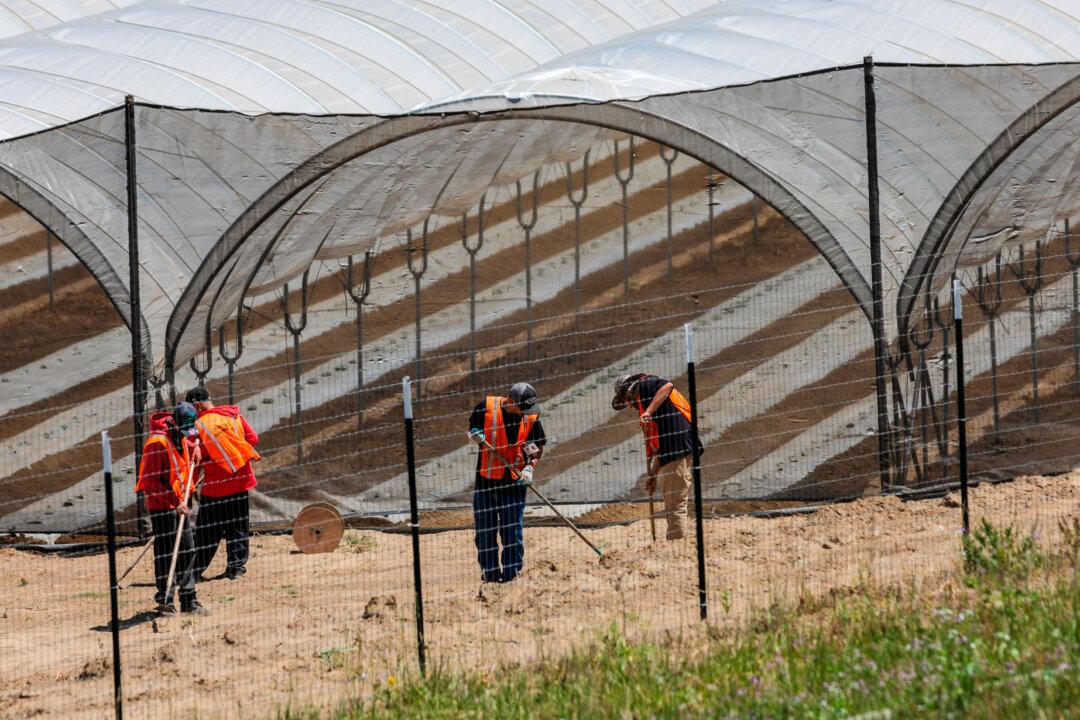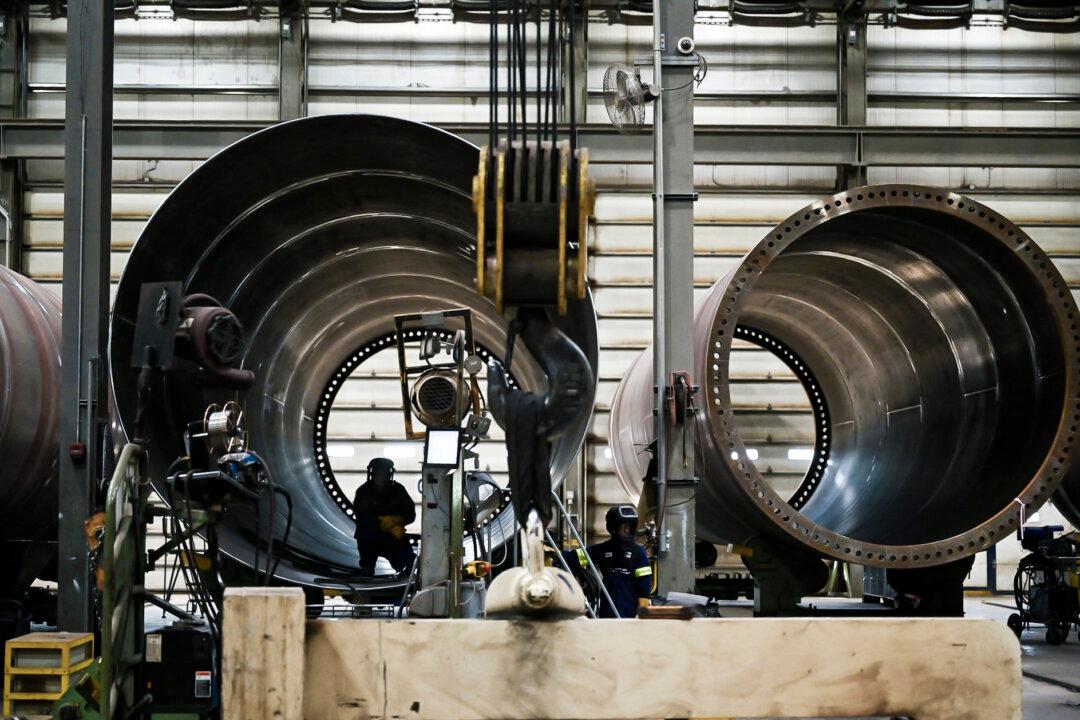JPMorgan Chase CEO Jamie Dimon has issued a fresh recessionary warning for the U.S. economy, saying that while consumers still appear to be in “good shape,” the trillions of dollars in extra money they got during the pandemic are running out and the government is running a “huge” deficit that will affect markets, scuppering any “soft landing” scenarios.
Mr. Dimon made the remarks in an interview on Fox News’ “Mornings with Maria” on Tuesday, in which he pointed to a range of factors affecting the economy that he expects to culminate in a recession.
“It might be [a] mild recession or heavy recession,” Mr. Dimon said, noting the persistence of inflationary factors like the Biden administration’s massive borrow-and-spend initiatives and rejigging of supply chains as globalization unwinds, which threaten to lead to stagflation—a dreaded double-whammy of economic contraction plus high inflation.
“I look at a lot of things—and forget just economic models for a second—$2 trillion of fiscal deficit, the infrastructure and IRA [Inflation Reduction Act] act, the green economy, the re-militarization of the world, the restructuring of trade are all inflationary,” he said, adding, “And that looks a little more like the 1970s to me.”

‘Skeptical’ of Goldilocks Scenario
Stagflation—the toxic brew of recession and high unemployment combined with high inflation—plagued the U.S. economy for over a decade in the 1970s. America’s unemployment rate doubled to 9 percent between 1973 and 1975, while inflation peaked at around 14 percent in annual terms.Recently, inflation exploded as the economy reopened after the pandemic recession and consumers were flush with cash from various government stimulus programs and the Fed’s ultra-low interest rates flooded the economy with cheap money.
That sent inflation soaring to a recent multi-decade high of around 9 percent in June 2022, prompting the Fed to raise rates at its fastest pace since the 1980s.
“I think they did the right thing to raise rates,” Mr. Dimon said in the interview. “I think it was a little late, and I think they’re doing the right thing just to wait and see what happens ... It takes a while to see the full effect of that ... but all of those factors may very well push us to recession, as opposed to a soft landing.”
A soft landing is a scenario where inflation comes down without the economy sliding into a recession and without a major rise in unemployment.
And while inflation has come down from the recent peak of 9 percent, Mr. Dimon warned that it could whiplash.
“I think there’s a chance here that people should be prepared that inflation comes down but then bounces around three [percent] and maybe even bounces up a little bit,” he said.

Mr. Dimon said he’s a bit skeptical that positive signs in the economy—like credit availability normalizing and stocks being up—will last.
“The extra money that they got during COVID, trillions of dollars, that’s kind of running out,” he said.
“The government has a huge deficit which will affect the markets,” he continued, adding, “I’m a little skeptical of this kind of Goldilocks scenario.”
Soft Landing?
While Mr. Dimon thinks a soft landing for the economy is unlikely, the Biden administration thinks that the U.S. economy has achieved that much-sought-after state.“The path the labor market and economy and inflation have followed suggests they’ve [the Fed] made a set of good decisions,” she added.

“Around this time a year ago, about 85% of economists and market analysts–including me–expected that the US and global economy would suffer a recession,” Mr. Roubini wrote on Jan. 8.
“Falling but still-sticky inflation suggested that monetary policy would grow tighter before rapidly easing once the recession hit; stock markets would fall, and bond yields would remain high,” he continued.
“Instead, the opposite mostly happened. Inflation fell more than expected, a recession was avoided, stock markets rose, and bond yields fell after going higher,” he wrote in his most recent piece.
“One therefore must approach any 2024 forecast with humility,” he added.
Still, even though he thinks that the worst-case scenarios now appear to be the least likely, he warned that “any number of factors, not least geopolitical developments, could be this year’s forecast spoiler.”







